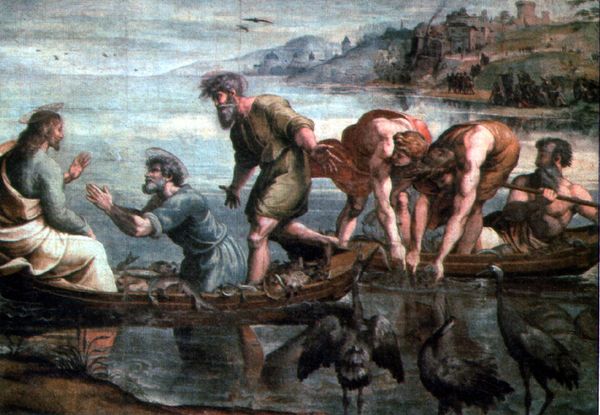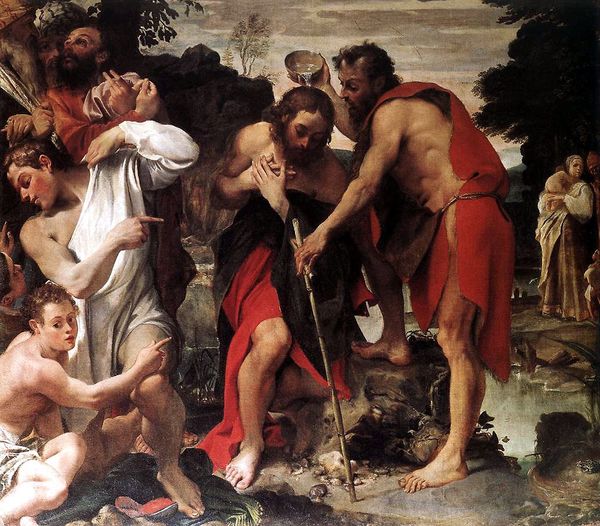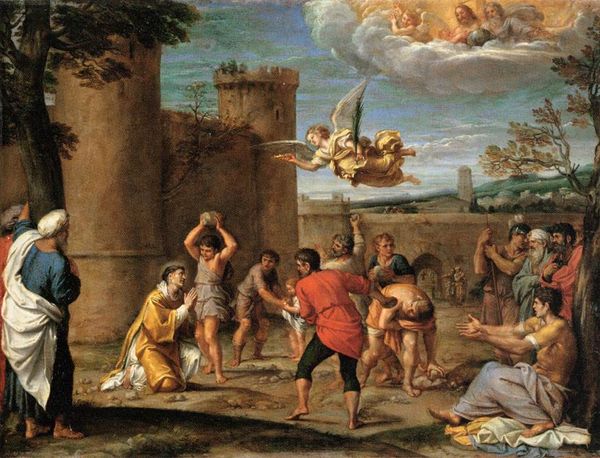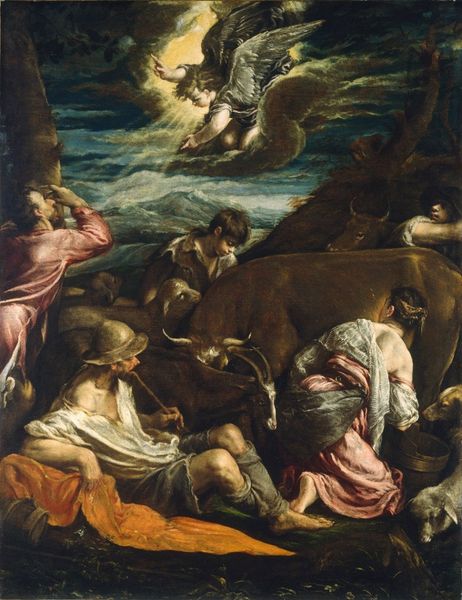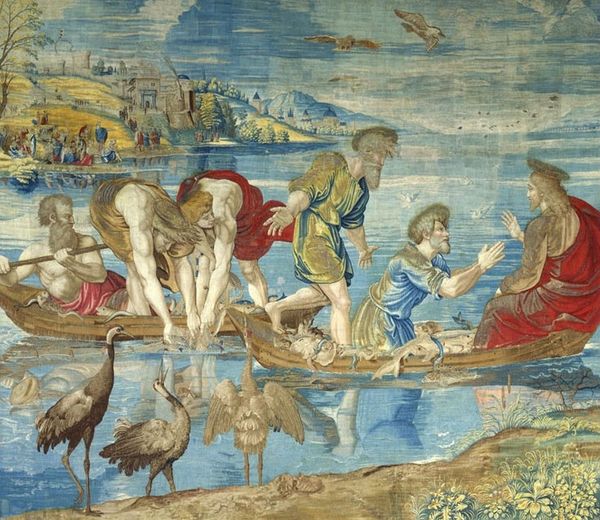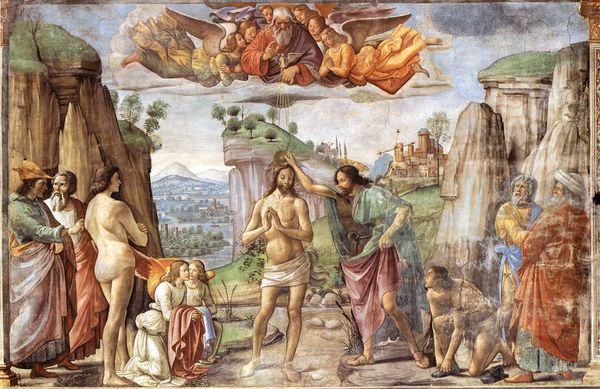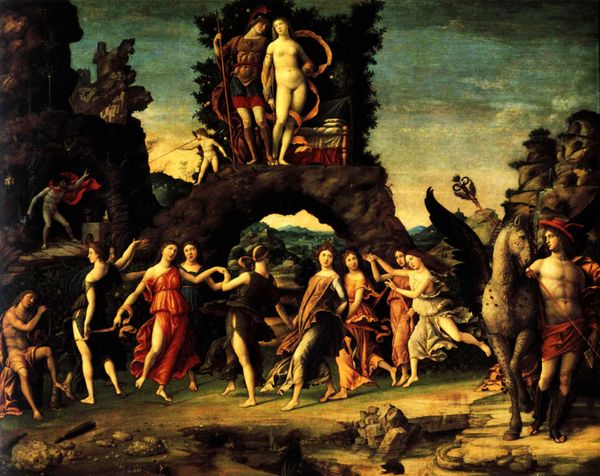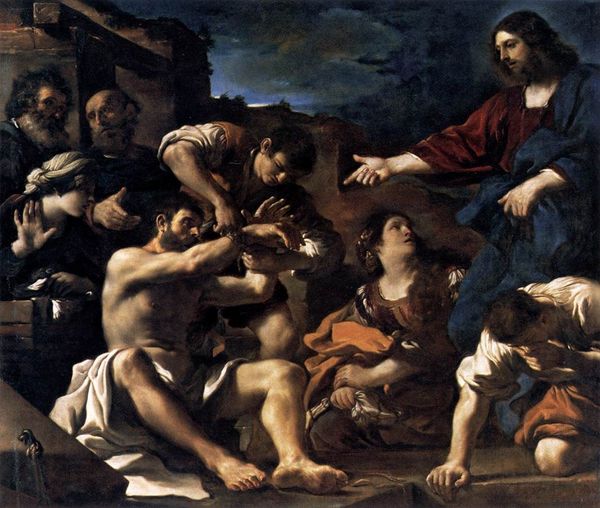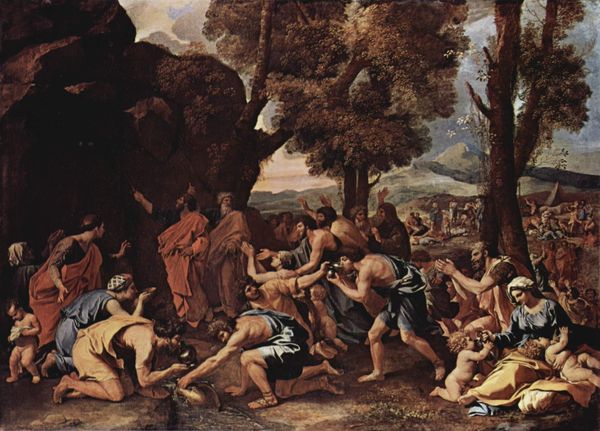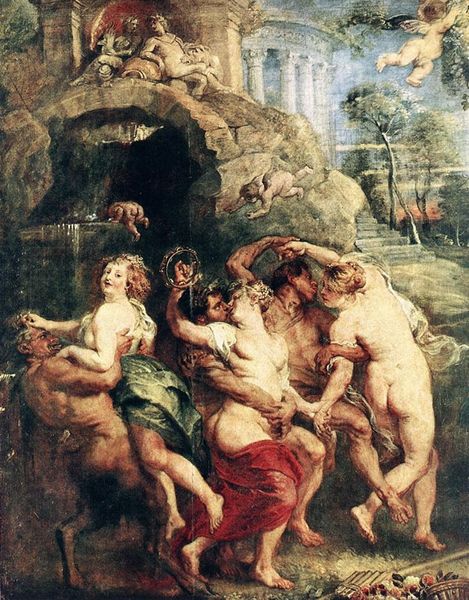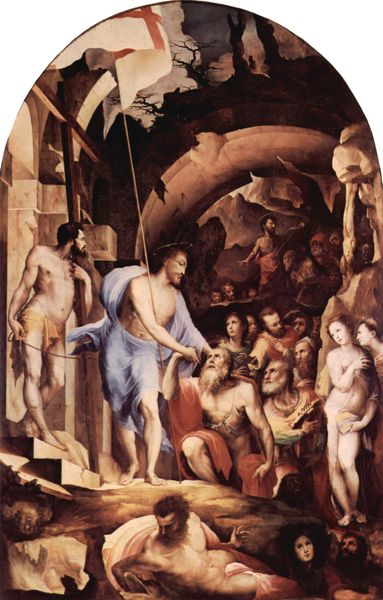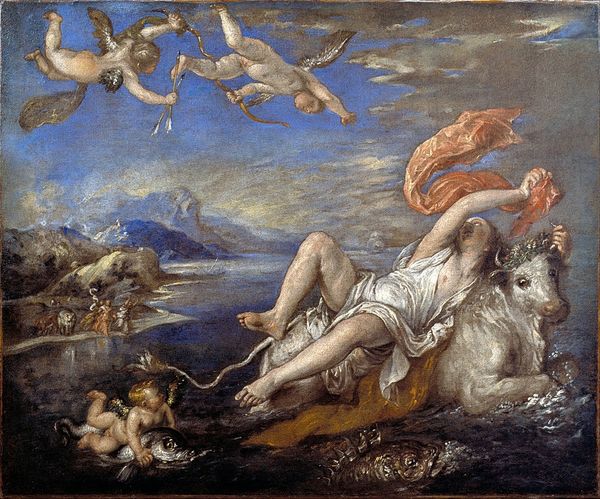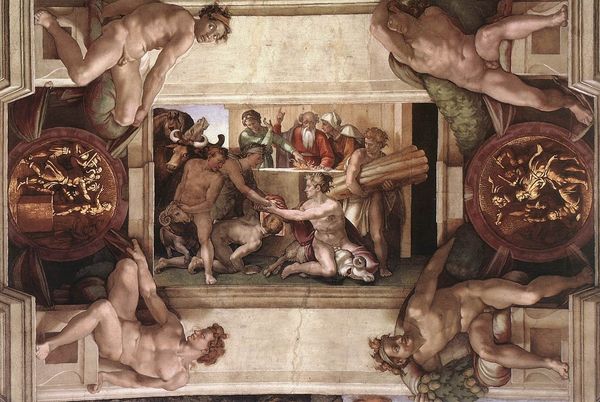
panel, painting, oil-paint
#
high-renaissance
#
panel
#
narrative-art
#
painting
#
oil-paint
#
landscape
#
figuration
#
oil painting
#
mythology
#
human
#
history-painting
#
italian-renaissance
Copyright: Public domain
Curator: What a stunning, albeit slightly faded, piece of High Renaissance art! We're looking at Raphael's "Miraculous Draught of Fishes," created around 1500 and currently residing in the National Gallery in London. It's rendered with oil paint on panel. Editor: It strikes me first as surprisingly tranquil, given the supposed miracle unfolding. There’s a certain stillness in the composition, despite all the figures and implied activity. What stands out is the careful placement of these cranes or herons, staring back. What could be their symbolic meaning in this biblical tale? Curator: Raphael received a commission from Pope Leo X for tapestries depicting the lives of Saint Peter and Saint Paul, so that would suggest these symbols are of divine intent in the Catholic doctrine. Considering it's from the early 16th century, within a few years of his arrival in Rome, it’s crucial to examine the sociopolitical role tapestries played in papal Rome. The Medici Pope wanted to convey that he, as the vessel of Christ, had supreme command in earthly, worldly matter, through visual propaganda such as these tapestries that were accessible by the layperson in mass numbers during Church ceremonies. The herons in the foreground would suggest such divinity to those who could interpret the work beyond its immediate, literal biblical representation. Editor: Intriguing point about visual propaganda! The tapestry connection helps illuminate the intent. I’m drawn back to the figures of the apostles themselves and the sheer number of fishes within the boat as a sign of Christ's promise and grace, which relates to my initial point regarding symbolic value within the animal kingdom. These waterfowls draw more attention, they carry this symbolism. Curator: The painting's power also comes from its integration into the papal and artistic machinery of Rome at the time, where its initial function was of course meant to create visually alluring political discourse, of course, filtered through biblical passage. Without such functions that defined Rome at the time, these depictions of the fishes would bear completely different meanings as a landscape oil painting, had it not been integrated into the visual politics. Editor: Ultimately, the painting's enduring appeal stems not only from Raphael's skill, which you bring to light in his awareness of the period’s politics, but also from its ability to connect viewers across centuries to core symbols of faith, divinity, and man. Curator: Indeed, seeing art within these conditions is essential to gaining valuable perspective into social and cultural beliefs during this particular period. Thank you for your time! Editor: And thank you for sharing your deep knowledge about political intentions and cultural considerations!
Comments
No comments
Be the first to comment and join the conversation on the ultimate creative platform.
